Facts about the animal kingdom of All animals
247 articles
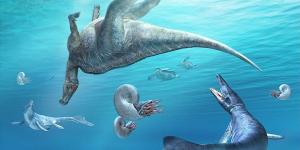
Millions of years ago, the oceans teemed with incredible creatures: prehistoric marine reptiles. These weren't actually dinosaurs, but a separate group of reptiles that adapted to life in the water. They ruled the oceans during the Mesozoic Era (252 million to 66 million years ago) and came in a variety of...

Birds are a class of warm-blooded vertebrates with distinguishing features including feathers, wings, and beaks. They are renowned for their remarkable diversity, encompassing over 10,000 known species. This diversity is evident in their size, shape, coloration, behavior, and preferred habitats. However,...

With its sleek physique, pointed ears, and bushy tail, the cunning fox is a well-known figure in folklore and around the world. These adaptable canines flourish in various environments, ranging from icy tundras to sunny deserts. Nature, in its cleverness, has created a remarkable array of creatures that...

The human nose might not be the most powerful tool in our arsenal, but in the animal kingdom, scent is king. From tracking prey across vast distances to identifying potential mates, some creatures possess an olfactory superpower. The sense of smell in animals, also known as olfaction, is a powerful...

The defining characteristic of placental mammals lies within a remarkable organ – the placenta. This specialized structure acts as a lifeline, fostering the exchange of nutrients, oxygen, and waste products between the developing fetus and the mother's bloodstream. This unique adaptation, coupled with...

While houseflies are a constant buzzing annoyance, their presence goes beyond disrupting your breakfast. Left unchecked, these pests can multiply rapidly and pose significant health risks. Houseflies act as carriers for various diseases and pathogens, including bacteria like E. coli and Salmonella, as well...

Crickets are a group insects which have an almost global distribution. Exceptions include areas with extreme weather conditions such as the poles. With so many present in our world, it is unsurprising that the habitats of crickets often intersect with human settlements. Living in close proximity means...
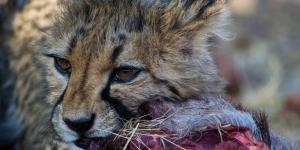
Known for their astonishing speed, the cheetah (Acinonyx jubatus) is an able hunter and an apex predator in their habitat. They have no natural predators of their own when adults, although they may face competition when it comes to hunting prey. While speed is their advantage, so too is stealth, hunting...
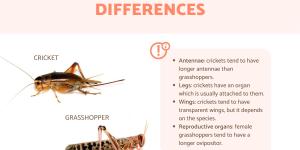
The difference between a grasshopper and a cricket can be difficult to determine. While the reasons are largely due to their close similarities in appearance and behavior, it is exacerbated by the fact there are some cricket species are known commonly or colloquially as grasshoppers. Both types of insect...
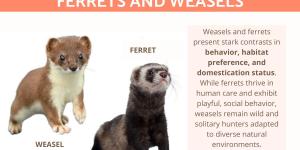
Ferrets and weasels, often mistaken for one another, are both members of the Mustelidae family known for their playful demeanor and curious nature. While they share some physical similarities, they are distinct species with different behaviors, habitats, and needs. Understanding these key differences...

From expansive fields to lively meadows, grasshoppers play a crucial role in maintaining the delicate equilibrium of nature. They are renowned for their ability to defy gravity with remarkable jumps. However, have you ever pondered how grasshoppers manage to execute such leaps? The answer lies not only...

If you know any types of mustelids, you are most likely aware of weasels and ferrets. Although these are two of the most emblematic mustelid species, the family Mustelidae is a much more diverse group of carnivorous mammals. While there are many differences between different types of mustelids, there...

The silkworm moth (Bombyx mori) is a biological marvel which is integral to the world of sericulture, also known as silk making. The name can be a little confusing since it is not actually a worm, but an insect with a larval stage that resembles a worm. They are of the order Lepidoptera, the order that...

While sea spiders may look like spiders that live in the sea, nature doesn't like to make things that simple. While they are arthropods that are related to arachnids like the spider, they are part of a subphylum known as chelicerates. Chelicerates include arachnids and horseshoe crabs, as well as the...

Sleeping geese are not always a common sight in the wild. They are more noticeable when they are flying or padding around the side of a pond. This does not mean geese do not sleep. Belonging to the Anatidae family, geese are waterfowl that have long necks and webbed feet. While there are various different...

For more than 200 million years, turtles, these ancient reptiles, have graced the Earth.While their behavior has been extensively studied, one aspect that remains intriguing is their sleep patterns. Unlike mammals, turtles don't exhibit the same clear-cut distinction between wakefulness and sleep. Their...

Amphibians, a diverse group of vertebrates, represent a fascinating transition from aquatic to terrestrial life. These remarkable creatures, classified within the class Amphibia, have adapted to both aquatic and terrestrial environments, undergoing a metamorphosis from gill-breathing larvae to air-breathing...

Bees, the tireless pollinators of our planet, possess a remarkable visual system that is crucial for their survival and success. Bees play a pivotal role in maintaining healthy ecosystems and ensuring food security for humans. Their ability to pollinate a wide variety of plants, from crops to wildflowers,...

Oysters do not die when their pearls are removed, but this does not mean no harm comes to the mollusk. Bivalves with exclusively aquatic habits, oysters are commercially very important to humans. This is due to their use as a food delicacy, as well as the harvesting of their pearls. Pearls are considered...

Bed bugs, tiny nocturnal insects feeding on human blood, have become a prevalent nuisance in both residential and commercial settings. Their resurgence in recent years has led to an increasing number of infestations worldwide. These pests not only cause discomfort with their bites but also trigger allergic...
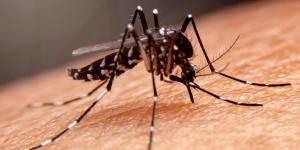
Mosquitoes are one of the most hated pests in the world, and for good reason. They can carry a variety of diseases, including malaria, dengue fever, and Zika virus. The lifespan of a mosquito can vary depending on the species, the climate, and the availability of food and water. Understanding the mosquito...

Bed bugs don't fly since they do not have wings or any other appendages for flight. They are also not very good jumpers, something which might be confusing due to their reputation for infestation. Since bed bugs are notorious for being spread among humans and infesting beds, we might think this is due...

The animals that can see in the dark are those which take what little light is present in their environment and enhance it for better night vision. They do this thanks to specially adapted eyes which have evolved morphologically to reflect light into receptor cells. Seeing in the dark allows animals...

The concept of pain in the animal kingdom has been the subject of zoological debate and study for the ages. The question of whether there are animals that do not feel pain raises fundamental questions not only about biological study, but about ethics. Specifically, it asks questions about human treatment...
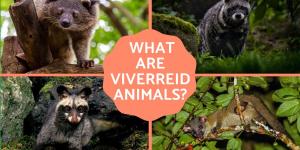
Viverrids, also known as civets and genets, are a mysterious and fascinating group of carnivorous mammals. They come in all shapes and sizes, from the tiny African palm civet to the mighty fossa of Madagascar. But what makes viverrids so special? For one thing, they are incredibly diverse. Some viverrids...

Have you ever seen a cat curl back its upper lip and expose its front teeth and gums? Or a horse wrinkle its nose and take a deep breath, with its mouth slightly open? This behavior may seem strange, but it has a very important purpose: to help animals detect and process pheromones and other scents.
In...

Within an ecological community, there are hundreds of different interactions between different species. These interactions are essential for maintaining balance within the community and, therefore, the ecosystem. One of the most important types of interactions is predation.Predators are animals that...

The praying mantis is a fascinating insect that is known for its predatory nature. These insects are often feared for their sharp claws and fearsome appearance. In fact, some people believe that praying mantises are poisonous, but this is a common misconception. In fact, praying mantises do not have...
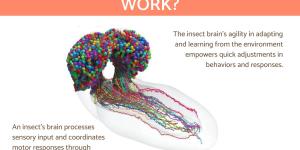
Insects, which form the most diverse group of animals, have achieved remarkable success, thriving not only in terrestrial ecosystems but also in aquatic environments. They possess distinctive characteristics such as segmented bodies divided into head, thorax, and abdomen, three pairs of jointed legs as...

The different types of geese can be loosely categorized as true geese and other birds which have the word ‘goose’ in their common name. All geese are types of waterfowl belonging to the family Anatidae. They are known for their graceful morphology and migratory behavior, among many other characteristics....
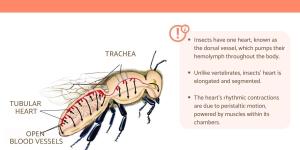
Insects, the most diverse and abundant group of animals on Earth, play an indispensable role in shaping our ecosystems. With an estimated 10 million species identified and possibly millions more yet to be discovered, insects demonstrate an astounding array of adaptations that have allowed them to thrive...
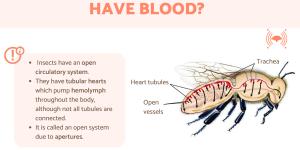
Insects do not have blood in the same way as have vertebrate animals. This does not mean they do not have a system for transporting nutrients throughout their body and completing various bodily processes. However, these processes are generally less complex because they are less complex animals. Insects...
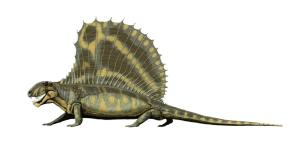
Amniotes are a clade of animals which include tetrapod vertebrates such as reptiles, mammals and birds. They are distinguished from other animals by the presence of a membrane which covers their embryos during development. These membranes serve various functions, including protection, allowing gas exchange...
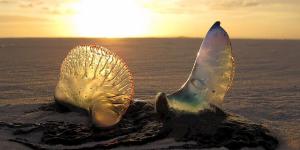
Animals without brains are those which don't need them. Although our human brain is a vital organ which is necessary for our continued survival, not all organisms have this type of central nervous system. The purpose of the nervous system is to send signals from the brain to other parts of the body. These...
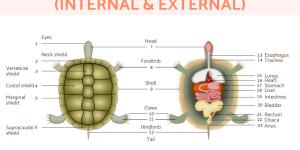
The anatomy of a turtle is one of the most unique in the animal kingdom. This is largely due to their shell, a very hard carapace which is part of their skeletal structure. This shell is used for protection, but it provides the turtle with unique abilities and behaviors. Although all turtles have certain...
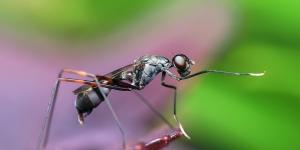
Tracheal respiration in insects is a mechanism for breathing which is adapted to their morphology and size. More complex organisms need a similarly complex system for breathing, such is the case with birds and mammals. Insects still need oxygen to survive, but they do not inhale via the mouth like other types...

Birds-of-paradise are types of passerine birds of the family Paradisaeidae. Their name is evocative of tropical beauty, something warranted both by the fact their natural habitat is tropical rainforest and their plumage is some of the most beautiful on any bird species in the world. There are 45 known...

Geese are a type of bird belonging to the family Anatidae, which also includes ducks and swans. Geese are known for their adaptability to various habitats, their impressive migration patterns and their strong social bonds. In fact, geese are being skilled flyers that undertake long-distance journeys between...

The different types of coral represent one of the most diverse animal species in terms of morphology and behavior. One of the areas most associated with this animal is the Great Barrier Reef of Australia. This incredible ecosystem functions the way it does in a large part due to the diverse specie of coral....

How a jellyfish is born will depend on the species since jellyfish can reproduce both sexually and asexually. Despite having a relatively simple morphology, jellyfish reproduction can be an often complicated process and has certain features which are distinct to their species. Jellyfish belong to the phylum...
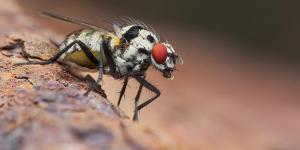
Diptera is a fascinating group of insects encompassing thousands of species, including flies, among others. Flies exhibit incredible diversity and are found across the globe. It's important to note that flies do not possess teeth, which means they are unable to bite. Instead, they have developed various...

The different types of bird feathers are important for many reasons. While we may know they are important in allowing a bird to fly, they also serve many other purposes. Even a flightless bird needs their feathers. The shape, structure and material with which the feather is formed affords the bird various...

Birds are a remarkable group of animals, known for their ability to take flight and their unique features that distinguish them from other creatures. What sets a bird apart and defines its identity? From their beaks and wings to their specialized internal organs, each part of a bird contributes to its remarkable...

Nestled in the southern reaches of Argentina and Chile, this vast region is home to a remarkable array of wildlife, each species adapted to thrive in its rugged and diverse landscapes. From soaring birds to marine giants, and from elusive predators to adorable herbivores, Patagonia is a sanctuary for...

Although we may have a clear impression of what is a seagull, the term is an informal name for various types of bird. All are grouped in the order Laridae, but there is much taxonomic controversy over which birds should be considered sea gull types. There are around 50 species of gull which can be found...
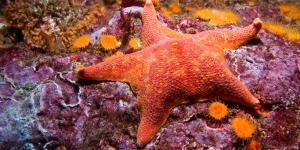
Starfish, commonly known as sea stars, have captivated people with their remarkable appearance and intriguing characteristics. These mesmerizing marine creatures are renowned for their distinctive star-shaped bodies, featuring five arms that radiate from a central disc. With their vibrant colors and intricate...

Crepuscular animals are those that are most active during the twilight periods of dusk and dawn. This is a period of low light where the sun has not set, but is below the horizon. Animals will adapt to their environment in many ways. Crepuscular animals have their own adaptations which make them better...

The mythological animals from ancient Greece have permeated cultures worldwide, remaining as legends long after their origins have been forgotten. While mythological creatures from many cultures still influence modern thought, those from ancient Greece are particularly resonant. This is partly due to the Greek...
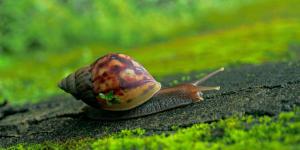
In the mesmerizing world of the animal kingdom, every creature holds its unique place, characterized by a distinct set of features and evolutionary traits. Among these captivating organisms is the snail, a creature that has intrigued and captivated curious minds for centuries. However, a fundamental question...

Oceanic food chains contain some of the largest organisms in the world, such as whales, feeding on some of the smallest organisms, such as phytoplankton. We know this thanks to the great work of many marine biologists, but the difficulties in exploring the depths of the ocean mean our understanding is still very...
